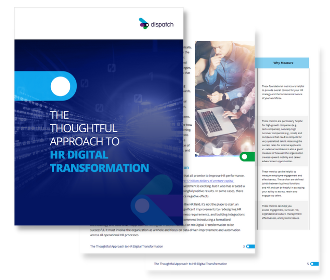Developing a Scalable Integration Architecture for a High Growth Global Tech Company
Client
A US-based commercial property management firm.
Challenge
Our client is a global asset management firm undergoing substantial growth – both organically and through acquisition. They recently acquired a nationwide retail property management company and initiated a project to consolidate both organizations’ core HR processes with Workday. This project required developing several new integrations and revisions of many more integrations to enable the new company’s population to be brought into Workday.
The systems in scope included iCIMS for recruiting, JD Edwards for General Ledger, Okta for user provisioning, ServiceNow for IT service management, Salesforce, and Concur. Over twenty existing integrations with payroll, insurance, and benefits providers needed to be updated to include the new employee population. Many legacy integrations were built in Mulesoft, and these needed to be re-platformed using Workday’s native integration toolkit. The acquiree was migrating from Ultipro to join the acquirer’s Workday instance. While the team had an excellent understanding of their legacy processes, there were some significant differences in Workday’s paradigms vs. Ultipro’s.
This project was time-boxed to about seven months. The kick-off was in April, with the benefits integrations scheduled to go live in late autumn and payroll on January 1. This was a high-stakes project impacting thousands of employees and with no option to delay due to the timeframes for open-enrollment and start of year transitioning for payroll accounting.

Approach
Post-merger integration projects have unique challenges. Both the acquiree and acquirer organizations don’t know each other’s systems, processes, or people well, and there is often confusion regarding what business processes will be consolidated and which ones justify remaining independent. These challenges were amplified during this project because it occurred entirely during COVID, with no opportunity for the teams to get together in person to bond, problem-solve, and build trust and rapport.
Strong joint executive sponsorship, effective project management, transparent communication, development discipline, and robust validation were all necessary for success.
The Importance of Project Management
This project was structured with three project managers who worked in synchronicity with each other. The acquirer and acquiree companies each allocated a project manager in addition to Dispatch’s project manager. Each person brought a necessary component to drive success. The acquirer project manager had a deep understanding of the systems, processes, structures, and decision-making processes required to build the future-state workflows. The acquiree project manager had an in-depth knowledge of the population being introduced to new systems and the processes and the unique business requirements that needed to be accommodated. Dispatch’s project manager was able to pull together a broad cohesive view of the entire project scope, including both organizations’ perspectives, and help generate a single unified plan.
These three project managers working well together set the tone for cooperation, urgency, and ownership for all stakeholders on the project. This leadership would have been important during a “normal” project and became vital during Covid, given everyone was working remotely and under significant additional personal and work-related stress.
Discovery Is About Group Learning
It was essential to eliminate ambiguity early and develop a complete understanding of the business requirements, use-cases, and systems in scope as quickly as possible. To that end, we coordinated an intensive Discovery phase – entirely conducted remotely.
Remote discovery took longer than if it had been held in a physical setting. We learned quickly that marathon discovery sessions are not effective. Zoom fatigue sets in quickly, and people tend to multitask and get distracted. Instead, we had more, shorter sessions with very tight agendas and breaks for people to take care of other businesses. We also had regular debrief sessions with the project managers, architects, and business analysts to synthesize what we had learned and ensure everything was documented as we went.
At the end of the discovery process, we require a formal sign-off from stakeholders to ensure we have captured business requirements and the detailed functionality of systems and business processes. Sign-off helps remind attendees that they are not casual contributors but are actively responsible for designing the future state of the business.
The discipline of frequent and short communications with the teams continued throughout the project with daily mandatory remote stand-ups, so that project status and task assignments were clearly understood and blockers could be addressed. These frequent communications helped build and retain team camaraderie and trust.
Agile Development
Because of the large number of integrations in scope, we needed to have an enterprise-wide architectural view of the future-state business processes to design systems that would work in a coordinated manner instead of a collection of point-to-point processes.
Business analysts and solution architects were responsible for establishing this architecture during Discovery and create clear targets for development. One of the outcomes of Discovery was the realization that the scope was far more extensive than initially anticipated. The increased scope combined with a slightly longer than anticipated Discovery phase put some pressure on development to “make up time” to hold the go-live dates.
A benefit of our agile development approach is the ability to ramp up development capacity with more parallel sprints. Surging capacity helped restore our project timelines. Frequent demo-days were crucial to fine-tune each solution and ensure the business stakeholders could fully visualize workflows and business processes as they were developed. Continuous testing and frequent code reviews were essential to reduce the risk of finding significant issues during User Acceptance Testing. It’s sometimes counterintuitive, but more testing can actually accelerate a project.
Validation and Go-Live
It is tempting to cut corners during validation and acceptance testing in time-boxed projects, but this is a mistake. The best way to save time during validation is to:
-
Have clearly documented requirements from Discovery that are refined during agile development.
-
Have clearly articulated test cases and use-cases documented from Discovery to define how to determine “acceptance.”
-
Conduct sufficient testing by developers and business analysts before UAT so that as many bugs as possible have already been found and squashed before business-user testing begins.
-
Have clearly defined roles and responsibilities for validation, training for business users to conduct tests, test scripts designed to ensure testers are efficient, and scheduled times for validation, so it doesn’t drag out.
-
Pre-define how feedback is collected and communicated back to developers in a form that clarifies what issues were found and how to reproduce the problem so the resolution can be fast.
We also recommend avoiding big-bang go-lives as much as possible. In this case, we were able to go live with a subset of business processes in October (related to benefits administration and enrolment) and a second go-live in January related to payroll processing. Lowering the stakes for go-live is always good practice.
We deployed our integration monitoring tool Sentinel to automatically detect and alert client personnel and ourselves if issues emerged in production. Given the significant number of new integrations coming online, Sentinel is a valuable platform to ensure any technical or data issues are addressed before they become business issues.
Outcome
The best go-live is a non-event, and that is what happened with this client. Other than some minor changes that were requested once the business processes were in production, there were virtually no issues from a technical or change management perspective. Vigilance is a good thing for projects of this size, and we remain in a support capacity to help our client address any issues as they emerge and ensure confidence is high.
Results that Matter
Start your assessment
Dispatch Integration has built HR data integrations and workflow automations for companies worldwide. Learn how we can help unlock the full potential of your HR app ecosystem.





